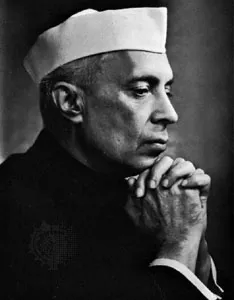
Mobilenews24x7 Bureau
Thinking of Pandit Jawaharlal Nehru and Indian cinema sounds way apart topics. Esteemed as the first Prime Minister of India, a writer and thinker, Nehru had played a big role in shaping the quotient and quality of Indian cinema may sound bit align but here are the facts we need to know.
Wounds post the partition was an enormous task and to harness different classes and faiths which Nehru tried tirelessly and ensured amity among all.
India that embraced every religion, caste, ethnicity, and language, thus, ensuring the new Republic would survive beyond the unfortunate events. Despite regular military uprisings and dictatorships along its borders, if democracy has dug deep into Indian soil, it is all thanks to Nehru’s exemplary upholding of secular values enshrined in the constitution.
.
As an ardent advocate for freedom, equality, and justice for all citizens acted as an adhesive for our “unity in diversity”, safeguarding the peaceful co-existence of multifarious languages, lifestyles, customs, traditions, and religious practices in India. His liberal outlook made such an indelible impression on the various artistic domains that a substantial number of progressive writers, lyricists, painters, musicians, and filmmakers created “works” that not just strengthened the secular fabric but also provided Indian sub-continent with societal and cultural identities that are acknowledged the world over.
So exmplary was the influence of Nehru’s humanism that it became the bedrock of numerous meaningful Hindi films and it is my steadfast belief that secularism has survived in India largely due to the sacred composite culture propagated by Hindi films and songs. If millions of Indians still practice secularism in their daily lives, it is because of the overriding impact of the Nehruvian ideal of universal brotherhood that permeated through Hindi film scripts and lyrics, nourishing friendship and goodwill in spite of lies and hate spread by devious elements.
How he influenced Indian Films
There is no denying that in India divisive politics may have led to several communal conflicts in the country but it is irrefutable that the concept of one nation is still alive in the collective conscience of Indians only because most Hindi films have steadfastly promoted Nehru’s maxim that hatred and killing are not tenets of any religion. Go down the memory lane and you will find that irrespective of their quality of production or star power, Hindi films from “Mother India”, “Phir Subah Hogi”, “Jaagte Raho”, “Godaan”, “Paigham” and “Garam Coat” to “Lagaan”, “Bajrangi Bhaijaan” and “Chak De India” have consistently propagated plurality to help India survive as a democracy.
“Nehru will be remembered for not abandoning vast sections of society” in India’s quest for economic and social progress. Most Hindi movies, especially those made between 1947 to 1980, vindicate the Nehruvian vision of inclusivity since they castigated the caste system and social disparities with great ferocity via noteworthy screen characters like Mrs D’Sa (“Anari”), Sher Khan (“Zanjeer”), Harnam Singh (“Roti Kapda Aur Makaan”) and Bharat (“Upkaar”). Driven by Nehru’s compassion and appeal to give up violence, poets also wove thousands of soul-stirring songs to embalm the painful wounds of partition with “bandages of love” author and politician Shashi Tharoor once opined.
Unlike the hypocritical utterances of politicians, phenomenal lyrical renditions like “Insaan Bano” (“Baiju Bawra”), “Pyaar Ki Raah Dikha Duniya Ko” (“Lambe Haath”), “Tu Hindu Banega Na Musalman Banega, Insaan Ki Aulad Hai Insaan Banega” (“Dhool Ka Phool”) to “Allah Tero Naam, Ishwar Tero Naam” (“Hum Dono”) and “Saathi Haath Badhana Saathi Re” (“Naya Daur”) inspired the “Ganga – Jamuni” tehzeeb (composite culture) wherein, goodness and humanism were ranked higher than religious and communal practices. Many heart-tugging songs lent a universal colour to festivals like Eid, Raakhee, Holi, Diwali, and Christmas, thereby, improving the quotient of goodwill and harmony in Indian society.
Unlike the mischievous rhetoric of modern polity that has led to horrendous polarisation, Nehru’s nationalism was a synonym for secularism wherein, all were accepted as equals irrespective of their caste, creed, colour, belief, or religion. Inspired by Nehruvian socialism, Hindi filmdom consistently raised the flag for the civil rights of the ostracised or marginalised people: be it through the exposition of feudal landlords in “Saheb Biwi Aur Ghulam” or exposing the vulnerability of the labour class via “Do Bigha Zameen”.
Article is inspired by Nehru’s ‘unity of vision’






